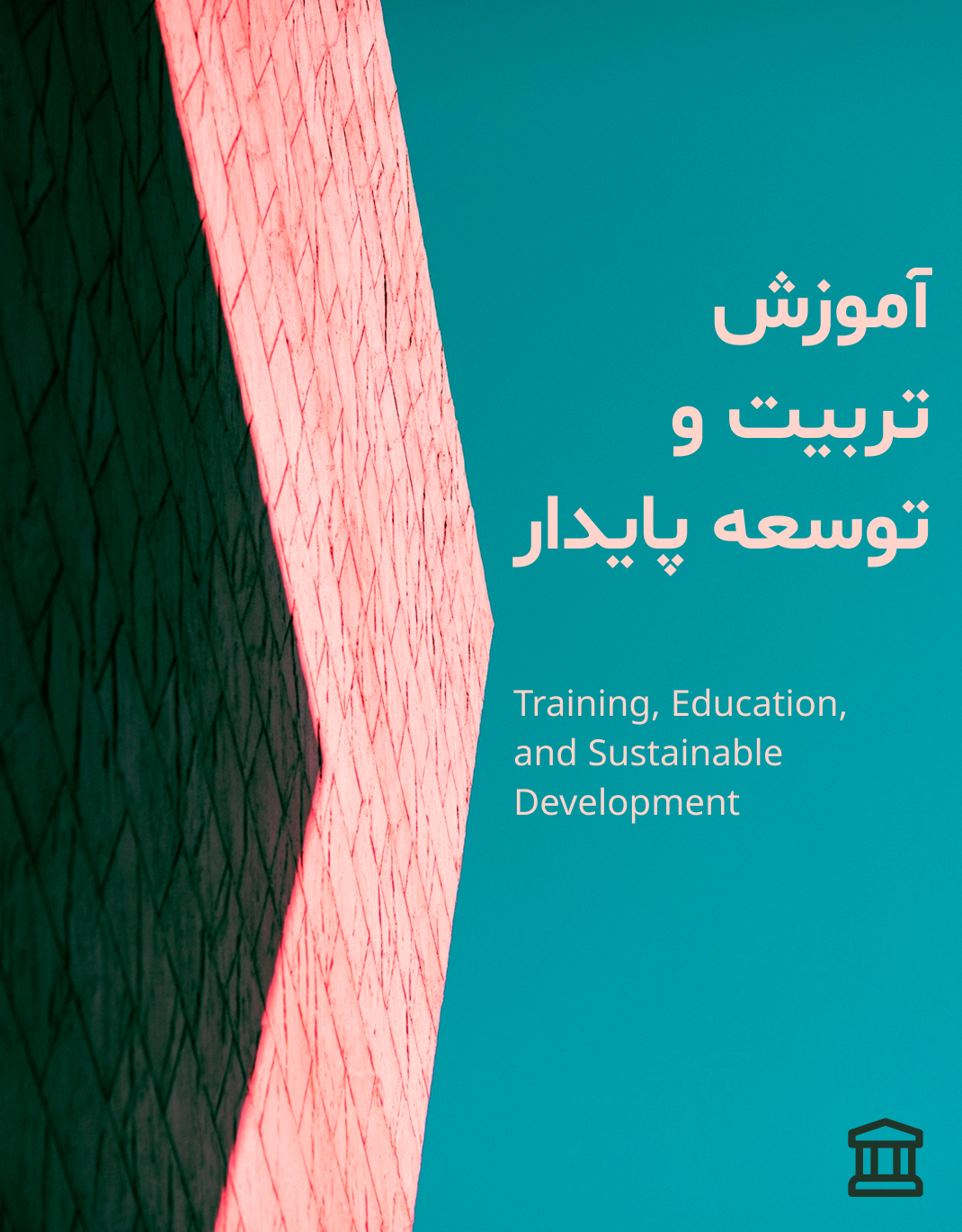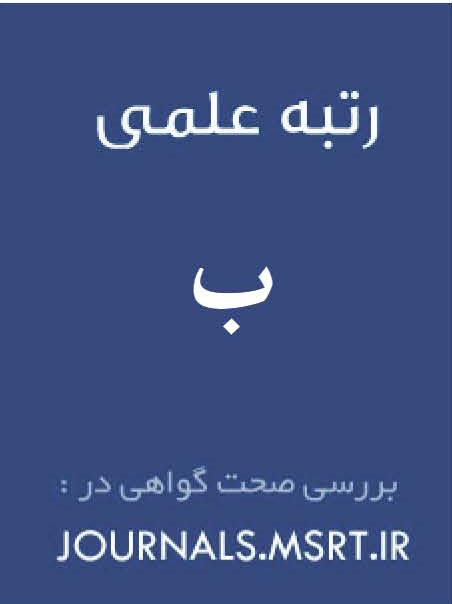Validation and Efficiency Analysis of the Structural Model of Municipalities in Iran’s Metropolises toward Urban Sustainable Development
Keywords:
Municipality, Urban Sustainable Development, Structural Model, Comparative Analysis, Smart Governance, IranAbstract
This study aims to design, validate, and analyze the efficiency of a structural model for metropolitan municipalities in Iran, using comparative frameworks from developed countries within the context of sustainable urban development. The study adopted an applied and descriptive–analytical mixed-method design. In the qualitative phase, data were collected through semi-structured interviews with 20 urban management experts and city council members and analyzed using thematic analysis with three-stage coding. In the quantitative phase, a researcher-made questionnaire was developed, whose validity was confirmed by CVR and CVI indices, and reliability by Cronbach’s alpha. Structural relationships among variables were analyzed using interpretive structural modeling (ISM) and MICMAC techniques. Results identified six key dimensions of the municipal structure: design and approval of the structure, financial structure and sustainability, organizational factors, creation of organizational units, activities under municipal supervision, and human resource structure. The ISM analysis indicated that “activities under municipal supervision” occupied the top strategic level, while “creation of organizational units” was at the foundational level. MICMAC results revealed that design (F1) and financial structure (F2) exhibited the highest influence and dependency. Cohen’s kappa (0.86) and Cronbach’s alpha (>0.80) confirmed the reliability and validity of the model. The validated model demonstrates that achieving sustainable urban development requires simultaneous reform of municipal organizational, financial, and human systems. Network-based, participatory, and data-driven structures are essential for transforming bureaucratic municipalities into adaptive, learning, and accountable urban institutions.
Downloads
References
Angelidou, M. (2017). Smart City Governance Strategies: A Comparative Analysis. Cities, 63, 53-61. https://doi.org/10.1016/j.cities.2017.01.005
Azkuna, I. (2013). Smart City Studies: International Study on the Situation of ICT, Innovation and Knowledge in Cities. https://www.uclg-cisdp.org/sites/default/files/smartcitiesstudy_en.pdf
Dong, F., Wang, S., & Yang, G. (2025). Comprehensive index of extreme climate risk in China and urban sustainable development. Chinese Journal of Population, Resources and Environment, 23(1), 62-74. https://doi.org/10.1016/j.cjpre.2025.01.006
Evans, J., & Karvonen, A. (2014). 'Give Me a Laboratory and I Will Lower Your Carbon Footprint!' - Urban Laboratories and the Governance of Low-Carbon Futures. International Journal of Urban and Regional Research, 38(2), 413-430. https://doi.org/10.1111/1468-2427.12027
Ghalibaf, M. B., Zaki, Y., Razavinejad, M., & Al-Hassan Qazvini, S. (2016). Comparative Analysis of Political Management Models in Developed and Developing Countries (Case Study: Iran and France). Researches in Progress and Excellence, 1(1), 71-96. https://www.jpishraft.com/article_43284.html
Gholipour, A. (2023). Practical Solutions for Designing and Reengineering Organizational Structure. Public Management, 15(3), 392-399. https://jipa.ut.ac.ir/article_95152.html
Homafar, M., & Saidi Rezvani, N. (2014). Comparative Analysis of Urban Planning and Management Structures (Case Study: Tehran, Sydney, Toronto). Quarterly Journal of Urban Studies, 3(12), 73-86. https://urbstudies.uok.ac.ir/article_10949.html
Hosseini, M., & Rezvani, N. (2020). Analyzing the Relationship Between Organizational Structure of Municipalities and Citizen Participation in Isfahan. Quarterly Journal of Sustainable Urban Management, 7(2), 45-62.
Kazemi, F., & Shariati, S. (2022). Comparative Analysis of Sustainable Urban Development Indicators in Iranian Metropolises. Journal of Strategic Urban Studies, 6(2), 89-105.
Kialashki, J., Kiakajuri, D., Taghipourian, M. J., & Rahmati, M. (2024). Designing a Qualitative Model for the Development of Ethics Codes of Urban Management Based on Sustainable Development. Technology, 19(1), 119-128.
Masri, M., & Shariati Nejad, A. (2024). Designing a Development-Oriented Model in the Municipalities of Kurdistan Province. Management of Governmental Organizations(Unknown). https://ipom.journals.pnu.ac.ir/article_11337.html
Meijer, A., & Bolívar, M. P. R. (2016). Governing the Smart City: A Review of the Literature on Smart Urban Governance. International Review of Administrative Sciences, 82(2), 392-408. https://doi.org/10.1177/0020852314564308
Mousavi, M., & Ahmadi, N. (2019). Examining the Role of Information Technology in Enhancing the Efficiency of Municipal Structures. Quarterly Journal of Technology and Urban Management, 5(3), 33-50. https://civilica.com/doc/1911141/
Nasirinasab, M., Zandeh Del Sabat, S., & Fadaei Qotbi, M. (2021). Evaluating the Performance of Organizational Structures of Municipalities with a Sustainable Development Approach.
Razazadeh, B. (2022). Foresight of Smart City Development in the Urban Planning and Architecture Department of Shahin Shahr Municipality. Studies in Urban and Regional Sustainable Development, 3(4), 49-64. http://www.srds.ir/article_168931.html
Rostami, S., & Fallahi, M. (2023). Designing a Performance Evaluation Model for Municipalities with a Sustainable Development Approach. New Urban Management Journal, 4(1), 23-40.
Sepidbar, Z., Mohammadzadeh, Y., & Nikpey Pesyan, V. (2024). Analysis of the effect of entrepreneurship index on employment in Iranian provinces: Spatial econometric approach. The Economic Research (Sustainable Growth and Development), 24(1), 285-311. https://doi.org/10.22034/24.1.285
Shali, M., Mahamad Khosroshahi, S. M., & Joudi, P. (2024). Assessing the Status of Sustainable Urban Development Indicators in Sahand New Town. Geography and Planning Journal, 28(87), 285-304.
Silva, C. N., Khan, S., & Han, J. H. (2018). Towards Sustainable Urban Governance: A Framework for Evaluating Municipal Structures. Sustainability, 10(4), 1156. https://doi.org/10.3390/su10041156
Tawfik, M., El Sayed, M., & Emad, S. (2024). A sustainable development comprehensive view in architectural education: Case study to reimage the urban public space with a special focus on Giza Zoo. Journal of Urban Research. https://doi.org/10.21608/jur.2024.295547.1160
Udaah, I. I., Abubakar, A., & Frick, P. J. (2024). Welfare Effect of Gig Economy on Urban Households in Nigeria. African Journal of Economics and Sustainable Development, 7(4), 203-218. https://doi.org/10.52589/ajesd-sx6xoomb
Yang, Y., Shen, L., Sang, M., & Ding, X. (2025). The impact of digitalization on urban sustainable development - An economic perspective. Technological Forecasting and Social Change, 212, 124005. https://doi.org/10.1016/j.techfore.2025.124005
Zhang, A. (2025). Analysis of the Sustainable Development Pathway of Urban-Rural Integration from the Perspective of Spatial Planning: A Case Study of the Urban-Rural Fringe of Beijing. Sustainability, 17(5), 1-19. https://doi.org/10.3390/su17051857
Downloads
Published
Submitted
Revised
Accepted
Issue
Section
License
Copyright (c) 2025 ارسلان شهنی (نویسنده); قنبر امیر نژاد; حجت طاهری گودرزی, فؤاد مکوندی, محمد همتی (نویسنده)

This work is licensed under a Creative Commons Attribution-NonCommercial 4.0 International License.

